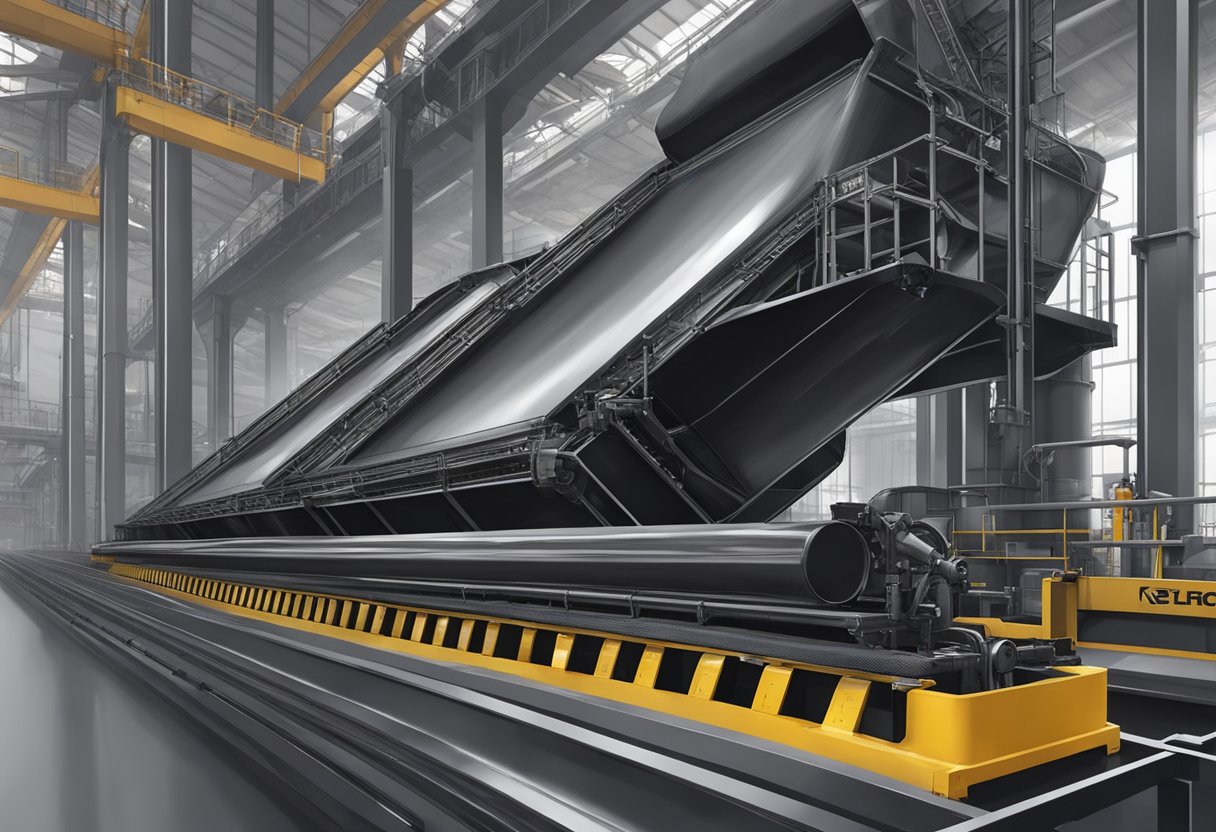Carbon Black N375: Properties and Applications
19/01/2024
Carbon Black N375 is a material that has been used in various industries for decades due to its unique properties. One of the most commonly used grades of carbon black is N375. This grade of carbon black is known for its high reinforcing properties and is used in a variety of applications, including tires, plastics, and coatings.

N375 carbon black is produced through the partial combustion of hydrocarbons, resulting in a fine powder that is composed of nearly pure carbon. This grade of carbon black has a high surface area and is highly reinforcing, making it an ideal choice for use in rubber compounds. It is also used as a black pigment in plastics and coatings due to its excellent UV stability and color properties.
Overall, N375 carbon black is a versatile material that has proven to be essential in many industries. Its unique properties make it an ideal choice for a wide range of applications, and it is likely to continue to be a valuable material for years to come.
Chemical Properties

Composition
Carbon black N375 is a specialty carbon black that is composed of primarily carbon and small amounts of hydrogen, oxygen, and nitrogen. It has a high surface area, which makes it an excellent reinforcing filler for rubber compounds. The chemical composition of N375 is carefully controlled during the manufacturing process to ensure consistency and quality.
Physical Form
Carbon black N375 is a fine powder that is black in color. It has a typical surface area of 85 m²/g and an average particle size of 35 nm. The powder is free-flowing and has a low bulk density, which makes it easy to handle and disperse in various applications. N375 is insoluble in water and organic solvents, but it can be dispersed in polymers and other materials.
In summary, carbon black N375 is a high-quality specialty carbon black that has unique chemical and physical properties. Its composition and physical form make it an ideal reinforcing filler for rubber compounds and other applications where high surface area and small particle size are required.
Production Process

Oil Furnace Black Method
Carbon black N375 is produced through the oil furnace black method. This method involves the combustion of heavy petroleum products in a furnace. The resulting soot is then collected and processed to produce carbon black.
The oil furnace black method is a well-established process that has been used for decades. It is known for producing high-quality carbon black with excellent properties, such as high tinting strength and low ash content. The process is also relatively cost-effective compared to other methods.
Thermal Black Process
Another method used to produce carbon black N375 is the thermal black process. This method involves the partial combustion of natural gas or oil in a reactor. The resulting gas is then cooled and the carbon black is collected.
The thermal black process is known for producing carbon black with high purity and low ash content. However, it is a more expensive process compared to the oil furnace black method.
Overall, the production process for carbon black N375 involves the use of either the oil furnace black method or the thermal black process. Both methods have their advantages and disadvantages, but they result in high-quality carbon black that is widely used in various industries.
Applications

Rubber Reinforcement
Carbon black N375 is widely used as a reinforcing agent in rubber manufacturing. It improves the durability, strength, and wear resistance of rubber products such as tires, belts, and hoses. The high surface area of carbon black provides a large contact area with rubber molecules, resulting in better dispersion and bonding. This leads to improved mechanical properties, such as tensile strength, tear resistance, and abrasion resistance.
Plastics Pigmentation
Carbon black N375 is also used as a pigment in plastics manufacturing. It provides a deep black color and enhances the UV stability of plastic products. It is commonly used in the production of automotive parts, electrical equipment, and consumer goods. The high tinting strength of carbon black allows for a low loading level, which reduces cost and improves processing efficiency.
Coatings and Inks
Carbon black N375 is used as a pigment in coatings and inks to provide a deep black color and improve UV stability. It is commonly used in the production of paints, inks, and coatings for automotive, industrial, and architectural applications. The small particle size of carbon black allows for good dispersion and smoothness, resulting in a uniform and glossy finish. Additionally, the high surface area of carbon black provides good adhesion and durability.
Overall, carbon black N375 is a versatile and valuable material with a wide range of applications in various industries. Its unique properties make it an essential ingredient in the production of high-quality rubber, plastics, coatings, and inks.
Market Overview
Demand and Supply
Carbon black N375 is a specialty-grade carbon black that is widely used in the rubber industry. The demand for carbon black N375 is expected to grow at a steady pace due to the increasing demand for high-performance tires and other rubber products. The supply of carbon black N375 is also expected to increase in the coming years as major manufacturers are investing in capacity expansion projects.
The demand for carbon black N375 is driven by the growing demand for high-performance tires, which require high-quality carbon black to improve their performance. The use of carbon black N375 in other rubber products, such as belts, hoses, and seals, is also increasing due to its excellent properties, such as high abrasion resistance, improved tear strength, and good dispersion.
On the supply side, major carbon black manufacturers are investing in capacity expansion projects to meet the growing demand for carbon black N375. For instance, Cabot Corporation, a leading manufacturer of carbon black, announced a capacity expansion project for its carbon black plant in Indonesia in 2021. This project is expected to increase the company’s capacity to produce specialty-grade carbon black, including N375.
Price Trends
The price of carbon black N375 is influenced by several factors, including the cost of raw materials, energy prices, and supply and demand dynamics. The price of carbon black N375 has been relatively stable in recent years, with minor fluctuations due to changes in raw material prices and other factors.
The price of carbon black N375 is expected to remain stable in the coming years due to the increasing supply of carbon black N375 and the steady demand for high-performance tires and other rubber products. However, any significant changes in the cost of raw materials or energy prices could affect the price of carbon black N375.
In conclusion, the market for carbon black N 375 is expected to grow steadily in the coming years due to the increasing demand for high-performance tires and other rubber products. The supply of carbon black N 375 is also expected to increase due to capacity expansion projects by major manufacturers. The price of carbon black N 375 is expected to remain stable in the coming years, but any significant changes in raw material or energy prices could affect its price.
Health and Safety
Exposure Risks
Carbon Black N375 is a fine black powder that is used as a pigment and filler in various products such as tires, plastics, and coatings. Exposure to carbon black N 375 can occur through inhalation, ingestion, or skin contact.
Inhalation of carbon black N 375 can cause respiratory irritation, coughing, and shortness of breath. Prolonged exposure to high concentrations of carbon black N 375 may lead to lung damage and respiratory diseases such as chronic bronchitis and emphysema.
Ingestion of carbon black N 375 is unlikely as it is not intended for ingestion. However, accidental ingestion may cause gastrointestinal irritation, nausea, and vomiting.
Skin contact with carbon black N 375 may cause skin irritation and dryness. Prolonged or repeated contact may lead to dermatitis.
Regulatory Standards
The Occupational Safety and Health Administration (OSHA) has set a permissible exposure limit (PEL) of 3.5 mg/m³ for carbon black N375. Employers are required to provide appropriate respiratory protection and personal protective equipment to workers who are exposed to carbon black N 375 above the PEL.
The European Union has classified carbon black N 375 as a Category 2 carcinogen, which means it may cause cancer in humans. Therefore, the use of carbon black N 375 is subject to strict regulations and must comply with the European Union’s REACH (Registration, Evaluation, Authorization, and Restriction of Chemicals) regulation.
In conclusion, it is important to handle carbon black N 375 with care and follow appropriate safety measures to minimize exposure risks. Employers should provide adequate training, personal protective equipment, and monitoring to ensure the safety of workers who handle carbon black N 375.
Environmental Impact
Emissions Control
Carbon black N 375 is a highly engineered material that is used in various industrial applications. During its manufacturing process, some emissions are generated. However, the emissions from N375 are strictly controlled and monitored to ensure that they meet regulatory standards.
The manufacturing process of Carbon black N 375 involves the combustion of hydrocarbons. The combustion process generates emissions such as carbon monoxide, nitrogen oxides, and sulfur oxides. To control these emissions, the manufacturing process is equipped with state-of-the-art emission control technologies such as scrubbers, bag filters, and electrostatic precipitators. These technologies help to reduce the emissions from the manufacturing process to a minimum.
Waste Management
The manufacturing of Carbon black N 375 generates some waste materials. However, these waste materials are managed in an environmentally responsible manner. The waste materials generated during the manufacturing process are collected, treated, and disposed of in compliance with regulatory requirements.
The waste materials generated during the manufacturing process include carbon black dust, spent catalysts, and other process-related waste materials. These waste materials are collected and treated to remove any hazardous substances. The treated waste materials are then disposed of in an environmentally responsible manner.
In conclusion, Carbon black N 375 is manufactured with strict adherence to environmental regulations. The emissions from the manufacturing process are strictly controlled and monitored, and the waste materials generated are managed in an environmentally responsible manner.
Advancements in Technology
Innovative Production Techniques
Carbon black N 375 is a high-performance reinforcing filler that is produced using advanced techniques. The innovative production process involves the use of natural gas as a feedstock, which is then subjected to a high-temperature combustion process. This results in the formation of a highly pure and uniform carbon black powder that exhibits excellent properties such as high surface area, low particle size, and high tinting strength.
The advanced production process also allows for the precise control of particle size and morphology, which is critical in achieving desired properties in end-use applications. The result is a carbon black N 375 that exhibits superior performance in various applications, including rubber, plastics, coatings, and inks.
Sustainable Practices
Carbon black N 375 is produced using sustainable practices that minimize the environmental impact of the production process. The use of natural gas as a feedstock reduces the carbon footprint of the production process significantly. Additionally, the advanced production process results in a highly efficient use of energy, reducing the overall energy consumption and associated greenhouse gas emissions.
The production process also incorporates waste heat recovery and recycling, which further reduces the environmental impact of the production process. The result is a carbon black N 375 that is not only high-performing but also environmentally friendly, making it an ideal choice for sustainable applications.
In conclusion, the innovative production techniques and sustainable practices used in the production of carbon black N 375 make it a superior choice for various applications. Its high-performance properties, combined with its environmentally friendly production process, make it an ideal choice for sustainable applications that require high-performance materials.
Future Prospects
Carbon black N 375 has a promising future in various industries due to its unique properties and applications. Some of the future prospects of carbon black N 375 are discussed below:
Increased Demand in Tire Industry
Carbon black N 375 is widely used in the tire industry due to its excellent reinforcing properties, which improve the durability and performance of tires. As the demand for high-performance tires increases, the demand for carbon black N 375 is also expected to rise. This is because carbon black N375 offers superior properties such as high tensile strength, high abrasion resistance, and good dispersion, making it an ideal choice for high-performance tire applications.
Growing Demand in Plastics Industry
Carbon black N375 is also used as a pigment and UV stabilizer in the plastics industry. With the increasing demand for high-quality plastics in various applications such as automotive, construction, and packaging, the demand for carbon black N375 is expected to grow. Carbon black N 375 offers excellent UV resistance, which helps to protect plastics from degradation caused by exposure to sunlight.
Expansion in Other Industries
Apart from the tire and plastics industries, carbon black N 375 has potential applications in other industries such as paints, coatings, inks, and batteries. Carbon black N 375 can be used as a pigment in paints and coatings to improve their opacity and UV resistance. It can also be used as a conductive additive in batteries to improve their performance. With ongoing research and development, the potential applications of carbon black N 375 in other industries are expected to expand.
In conclusion, carbon black N 375 has a bright future due to its unique properties and applications in various industries. With the increasing demand for high-performance materials, carbon black N 375 is expected to play a significant role in meeting the needs of various industries.




